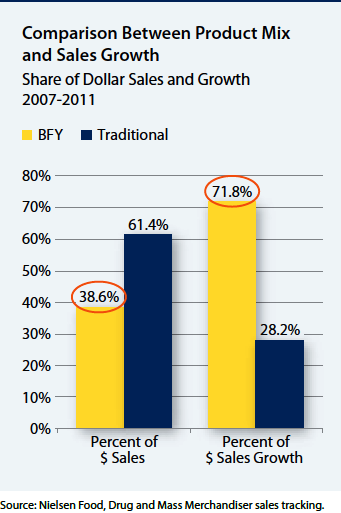EWG says kids’ cereals have too much sugar
The Environmental Working Group (EWG) is getting interested in childhood obesity. It released a report on sugars in kids’ breakfast cereals.
The report shows—no surprise—that kids’ cereals are really cookies in disguise, typically 40% -50% sugars by weight. Kellogg’s Honey Smacks topped the list at 55%.
Michele Simon’s analysis of the report notes that these levels don’t even meet Kellogg’s commitment to responsible marketing, a pledge to “apply science-based Kellogg Global Nutrient Criteria to all products currently marketed to children.”
I’ve been reading reports like this since the 1970s when Center for Science in the Public Interest published them at regular intervals. Not much has changed.
Courtesy of Kellogg, I have a collection of copies of Froot Loop boxes dating back to the year in which this cereal was first introduced. I thought it would be interesting to check the sugar content.
Froot Loops, Sugar content, grams per ounce
| YEAR | GRAMS SUGARS PER OUNCE | LABEL |
| 1963-71 | Lists calories: range 110-114 | |
| 1972-75 | Lists carbohydrate, not sugars | |
| 1976-78 | 14 | Lists sucrose and other sugars |
| 1979-92 | 13 | |
| 1993-95 | 14 | Nutrition Facts: sugars |
| 1996-2006 | 15 | |
| 2007 | 13 | |
| 2008-11 | 12 |
In 2005, Kellogg tried a version with 1/3 the sugar—10 grams—but it didn’t sell and quickly disappeared.
Companies are trying to reduce the sugars by a little, but this seems to be the best they can do. It’s not enough.
As the EWG press release explains, some cereals are better than others. It notes that I recommend:
- Cereals with a short ingredient list (of additives other than vitamins and minerals).
- Cereals high in fiber.
- Cereals with little or no added sugars (added sugars are ingredients such as honey, molasses, fruit juice concentrate, brown sugar, corn sweetener, sucrose, lactose, glucose, high-fructose corn syrup and malt syrup).
- Even better, try fresh fruit and homemade oatmeal.




